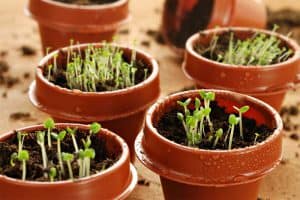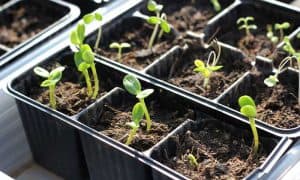 Herbs have countless uses and play an essential role in our lives. I bet like many home gardeners, lots of things have also come to your mind when you think of growing and using these special plants which are not only medicinal but savory and aromatic, too; for instance, eating a delectable Italian meal with lots of garlic and oregano, drinking a steaming hot cup of mint tea, or taking a soothing and scented bath with lavender. Well, I’m sure you will be glad to know that these organic herbs are actually quite as easy to grow as they are as agreeable to your senses.
Herbs have countless uses and play an essential role in our lives. I bet like many home gardeners, lots of things have also come to your mind when you think of growing and using these special plants which are not only medicinal but savory and aromatic, too; for instance, eating a delectable Italian meal with lots of garlic and oregano, drinking a steaming hot cup of mint tea, or taking a soothing and scented bath with lavender. Well, I’m sure you will be glad to know that these organic herbs are actually quite as easy to grow as they are as agreeable to your senses.
Easy Steps for Organic Herb Gardening
While the most straightforward way to have herb plants at home is by purchasing them directly online or from your local garden center, you can in fact start growing different kinds of herbs from seeds indoors during springtime. Planting with seeds not only gives you a wider selection of herb varieties to grow, it is less expensive too.
- Regardless of the type of herb you are planning to grow indoors from seed, remember that they all have a few basic requirements. For the best success, it is highly recommended that you make use of artificial light set up in growing your herbs to make sure that they become short, stocky plants that are well-adapted to outdoor growing. Just keep these lights about 2 to 4 inches away from the tops of the herbs and that you set them on a timer for 14 hours each day.
- Make use of seed starting potting mix when growing your herb seeds. Unlike regular potting soil, seeding starting mix is lighter which makes it easier for germinating seeds to poke through. A large number of herb seeds are tiny that a heavy mix prevents them from sprouting; also making them more likely to rot before taking root.
- Although clay pots are okay for growing herbs, it’s nevertheless best to use plastic trays with small cells to start them. These small cells will help make it less difficult for you to start many herbs all at once. It will also allow you to sow them with similar growth conditions near each other. Most herbs can be transplanted into larger pots as they grow. The exception is for those that do not like to be moved like parsleys. They thrive better if started in larger pots as you can minimize the number of times they have to be resettled.
- Place the pots or trays in a warm room, out of direct sun. To help speed up seed germination, you can apply bottom heat with a heating mat. Cover the small cells with clear plastic in order to keep the soil moist. Once the herb seeds have germinated, remove the plastic and then place the pots or trays under lights.
- Use light sprays of liquid organic fertilizer to help keep your seedlings green and growing strong. It’s recommended to apply a diluted solution every week starting a week after your herb seeds have sprouted. Lastly, transplant your herbs the moment they have become too large for their pots. However, don’t forget to harden your plants off before moving or planting them.
Click here to Choose the Right Plants for Your Vegetable Garden






Pingback: Steps to Successfully Grow Food from Seeds – Organic Gardening Secrets